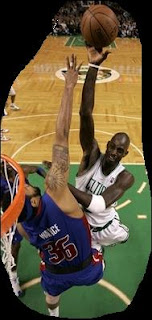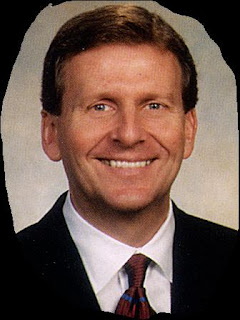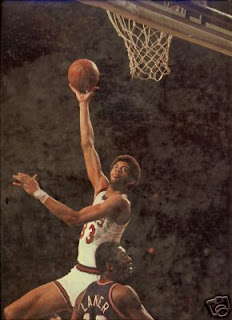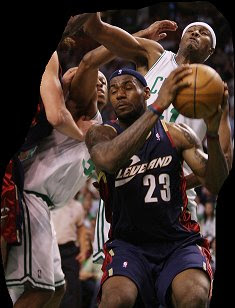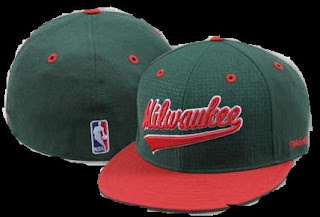 NOTE: Before I get started with my lottery evaluation, a special shout out to the world's newest Milwaukee Bucks fan, and future lottery prospect -- who is sure to have a deadly set-shot release -- my nephew Henry David... born Saturday night in the Land of the Lakers, Minnesota. Welcome to a Green-and-Red World, Hammer! (He may live in Minnesota, but he bleeds Green and Red. In fact, he comes from a long line of crazed Antlerheads. His grandfather and middle-namesake famously snuck out of the house to attend a Bucks game with his Jaycee buddies when Henry's old man (my brother Todd) was 3 days old and sick with Billy Rubin (sp?)! That's Green and Redication, y'all!! Hold on... I'm going to look up who they were playing on basketball-reference... I'm back... Ho, ho... its a true story!! Its been confirmed!! 3 days after Henry's dad was born happens to have been a Saturday night -- which completely fits the "Jaycees Outing" angle of the story -- and the Bucks indeed were playing at home against the Houston Rockets. By the way, the Green and Red prevailed, 126-101. And now you know the rest of the story. On with the show...)Slim Pickins at the Top, Fats Domino at the Bottom
NOTE: Before I get started with my lottery evaluation, a special shout out to the world's newest Milwaukee Bucks fan, and future lottery prospect -- who is sure to have a deadly set-shot release -- my nephew Henry David... born Saturday night in the Land of the Lakers, Minnesota. Welcome to a Green-and-Red World, Hammer! (He may live in Minnesota, but he bleeds Green and Red. In fact, he comes from a long line of crazed Antlerheads. His grandfather and middle-namesake famously snuck out of the house to attend a Bucks game with his Jaycee buddies when Henry's old man (my brother Todd) was 3 days old and sick with Billy Rubin (sp?)! That's Green and Redication, y'all!! Hold on... I'm going to look up who they were playing on basketball-reference... I'm back... Ho, ho... its a true story!! Its been confirmed!! 3 days after Henry's dad was born happens to have been a Saturday night -- which completely fits the "Jaycees Outing" angle of the story -- and the Bucks indeed were playing at home against the Houston Rockets. By the way, the Green and Red prevailed, 126-101. And now you know the rest of the story. On with the show...)Slim Pickins at the Top, Fats Domino at the BottomThis lottery looks a little bare. Of the consensus top 17 prospects, I see 3 definite "players", 3 other "possibilities", and 11 guys I wouldn't draft for my noontime YMCA team. Now, what are the odds the Bucks will end up with a stiff?
The Big Timers (I've already commented on these 3 players
ad infinitum and will not repeat my analysis here, except to say that while you guys all laugh at Kevin Love, I guarantee he will be a contributor in the NBA which is more than I can say for most of the top prospects. If the Bucks get a contributor in this draft I will be ecstatic).
1.
Derrick Rose2.
Michael Beasley3.
Kevin LoveSort of/ Maybes1.
OJ Mayo: I'm pushing it here. His college numbers were low, but I'm going to give him the benefit of the doubt because he may be able to score more easily when his role becomes diminshed, and he has the ideal size and strength to rebound and defend out of the 2 hole.
2.
Anthony Randolph: This recommendation is contingent upon position. If he is slotted at the 3, as some are suggesting he will be, he has the length and the rebounding to produce above average numbers on offense, and to be a force on defense. But I am skeptical. The NBA rarely allows players who are tall enough to play power forward play small forward, no matter how weak they may be. This is especially true when the player has no perimeter game, which Randolph lacks.
3.
Donta Green: Take the Randolph analysis and just substitute the name Donta Green.
Buster Browns (Get out of town)1.
Brooke Lopez: Why is this guy so highly coveted? Applying history to his collegiate production almost assures us he will be a big, big bust. What is there to like about him? He doesn't shoot well at all for a big man (under 50%). He's passive. He doesn't rebound. He's passive. He turns the ball over. He's passive. Are you getting the picture? He stinks. Didn't anyone watch the NCAAs?
2.
Jerryd Bayless: What the hell? People...
people... undersized shooting guards who can't shoot and aren't strong and have no history of playing the point DON'T WORK OUT EVER!! I don't care how "freaky athletic" he is, or how fast he can run the shuttle, or whatever. He didn't produce good numbers in college, and the meager numbers he did produce are heavily skewed due to Bayless' love of the easy college 3. So, what I am saying is his college production was subpar... WHAT THE HELL MAKES YOU THINK HE WILL DO BETTER IN THE NBA? And I haven't even addressed the defensive trouble he is sure to have.
3.
Eric Gordon: Can we get a consistent height record on this kid? Half the world calls him 6'4'' the honest half has him at 6'3'', and I'll bet you dollars to donuts he's no better than 6'1 1/2 in stocking feet. Okay, once again, lets review this "top" prospect. He shoots the ball extremely poorly (45%). He couldn't even hit the NBA 3 point average (35%) from college distance (he shot 33.4% from college 3). Think he'll get better in the NBA? Think again. In fact, think TJ Ford. So, we have a "scorer" who's undersized and can't shoot from the outside very well. Brilliant. He must do something well. He's a top ten consensus pick. Well, lets see... he doesn't rebound A LICK. His board totals would embarass Mugsy Bogues. He doesn't seem to pass either, and he's not a good ballhandler. Oh, but he does have an above average turnover rate. Yeah,
he's a hell of a prospect.
4.
Danilo Ganillari: I heard this foreign bud, who stands 6'9'' and weighs all of 209 pounds... that's not a typo... say he wants to be one of the best players on the planet. If he's speaking about Mars or Venus or one of the other unihabitated planets in the solar system, I'd give him a 50/50 shot at reaching his goal. But on Earth he sucks. To put a Dennis Leary emphasis on it... he suuuuccccckkkkks. This foreign born softy doesn't rebound at all, nor does he ever venture into the paint. He shoots the 3 okay, but he hasn't had an NBAer choking his air space yet, either. Oh, and he doesn't pass. And I'm going to venture to say he plays no defense.
All right, I'm getting bored. Let me rush to the finish... the two point guards are lesser versions of TJ Ford with not as good a jumpshot (sarcasm).
Kosta Koufus is one of these big men who never, ever ventures into the paint.
Darrel Arthur is way too small to play the power forward in the NBA and he doesn't shoot well enough to play the 3.
All in all, this year's lottery stinks.
I actually think all of the good picks are, ironically, down the draft board.
Joe Alexander looks like a producer, as does
Mareese Spaights and
Chris Douglas Roberts. And the big sleeper of all of them doesn't even show up on draftexpress.com's board until the second round...
Ryan Anderson, small forward and bigtime producer from California.
Anderson rebounds very well, he shoots it well, he produced at an incredible rate. If he projects at power forward, the only thing that could slow him down is his strength. If he projects as a small forward, nothing will slow him down on offense, but I suspect he will struggle on defense.
Anyway, projecting his college numbers to the pros, Anderson would be a slightly below average power forward and a well above average small forward. I'd seriously rather take this guy and give him a shot at the 3 rather than selecting anyone the Bucks would likely select at 8.
Then you've got
JR Giddens (I'm looking at some of these guys, literally, for the first time). His numbers for a shooting guard are off the charts. What is he doing in the second round while Eric Gordon is in the first? He shoots better, produces way, way, better. Has better size, more experience... I'm beginning to believe the "Eyeball" prospects are all in the overvalued lottery whereas the "Productive" prospects are all undervalued members of the second round. Wow
I haven't even gotten to rebound machine
Richard Hendrix yet. But I"m going to stop here for the night with this thought... the Bucks have to trade out of the lottery. The gold is all down stream!


